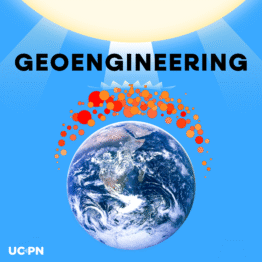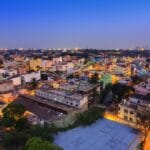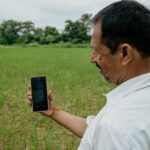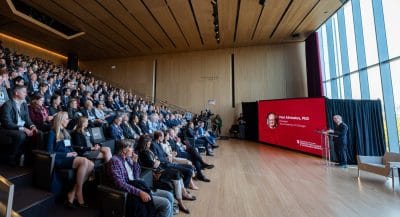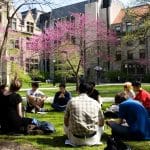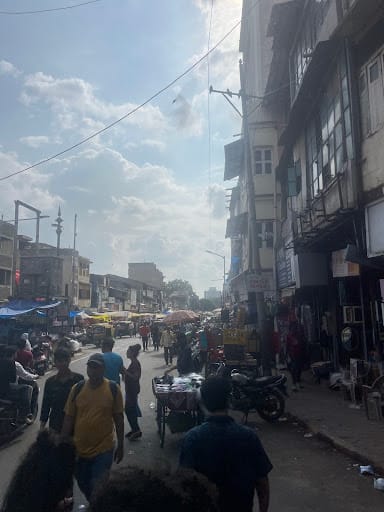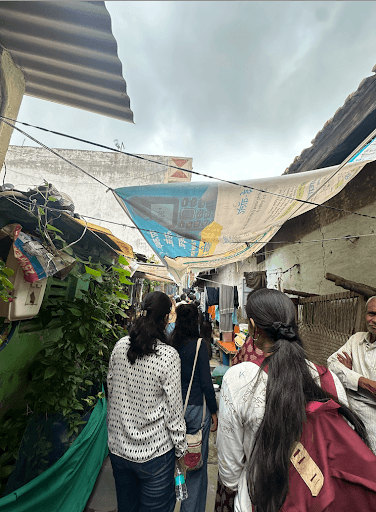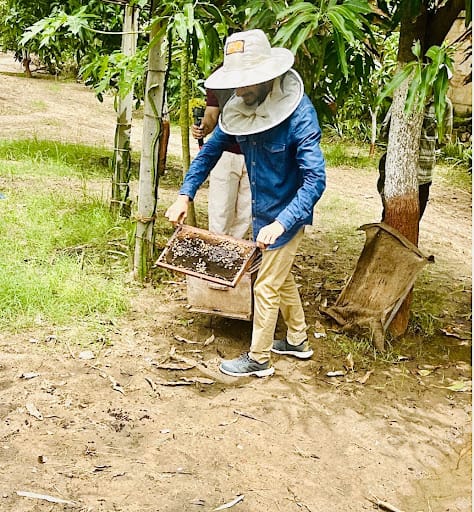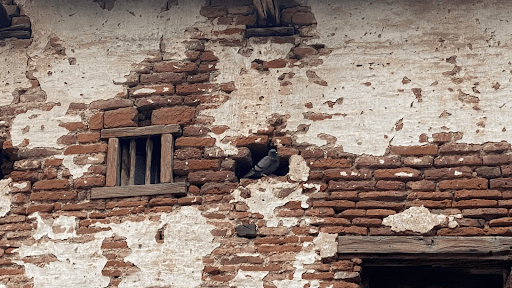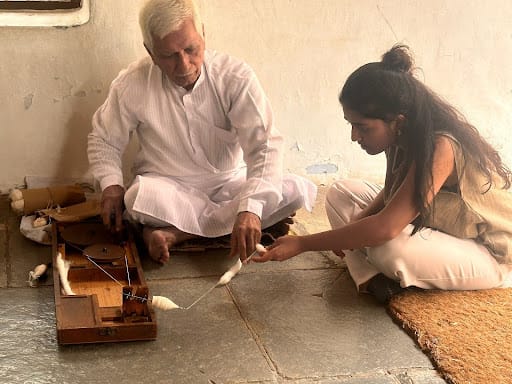In July, 15 University of Chicago undergraduates embarked on a three-week journey to gain first-hand experience of the climate and growth challenge in Delhi and Ahmedabad, India. The India Summer Fellows attended lectures from experts from UChicago and at Ahmedabad University. The classroom discussions were paired with themed excursions, allowing students to learn about the challenges of climate change in a growth context and see it first hand through field visits. Each day added new layers to their understanding. Throughout the program, the fellows took snapshots of meaningful experiences that reflected their increasing understand of the climate and growth challenge.
These images were part of an India Fellows Program photo contest. Congratulations to our winners!
Samantha Alderden, College ’28, took this photo from Manek Chowk (Ahmedabad), where in the afternoon you find a lively market bustling with street food, jewelry, clothing, perfumes, and other miscellaneous items. The bustling market contrasts with the realities of climate change. Air pollution leaves a haze over the street, while street vendors use tarps and tents to shield their stalls from the heat.
Parjanya Tiwari, College ’28, took this photo during a visit to the Self Employed Women’s Association (SEWA) in Ahmedabad. It represents resilience in a changing climate. The tarp is a covering from the heat in the narrow walkway, and doubles as an advertisement to those above. At SEWA, the students learned about how the women are managing waste by using it to make notebooks and other interesting cultural trinkets out of recycled materials. They are also educating about the need for sustainability in their community.
Aria Saxena, College ’28, captured a young entrepreneur carefully tending to bees, symbolizing how grassroots innovation can support both climate resilience and sustainable livelihoods. As pollinators vanish due to rising temperatures and habitat loss, community-led apiculture offers a nature-based solution that sustains and preserves biodiversity, food security, and rural incomes. It represents how climate action and economic growth can align at the grassroots level, fostering meaningful change globally.
Rudra Patel, College ’27, took this picture in the old city of Ahmedabad. Exploring the neighborhood, they saw coves built into buildings for birds and squirrels to live. It represents how human society influences the natural world, but the natural world also influences human society. We must coexist and cope with climate change together.
Pari Shah, College ’28, took this photo outside of Gandhiji’s house at the Gandhi Ashram where a man spinning cotton using a charkha motioned for her to sit down next to him. He was performing the same act that Gandhi championed as a symbol of self-reliance during his resistance to colonial exploitation, a representation of the desire for a return to indigenous systems of production. In the context of our current climate crises, overconsumption, and environmental degradation, this moment mirrors a call for circular economies and sustainable livelihoods. Past knowledge may be our future in this warming world.















